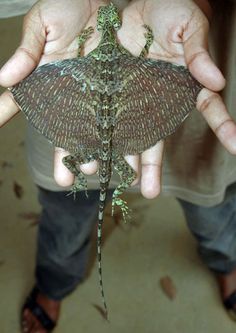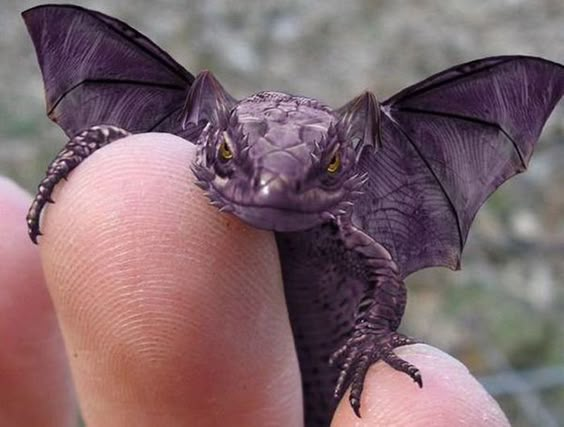- Joined
- Sep 1, 2014
- Messages
- 13,103
- Reputation
- 5,466
- Reaction score
- 46,567
- Points
- 0
- Currently Smoking
- yo arse
3 New Spiky, Colorful ‘Dwarf Dragon’ Lizard Species Discovered in South America’s Andes
Read more: http://en.yibada.com/articles/24849...rd-species-discovered-south.htm#ixzz46g2YJmtm
Scientists have recently found 3 new species of woodlizards, or "dwarf dragons" in South America's Andes. It is a mystery that the spiky lizards in Peru and Ecuador were not discovered until now, considering they are some of the biggest and most colorful lizards living in the region.
Scientists accidentally discovered the new lizard species during expeditions in the Tropical Andes. The region is extremely rich in biodiversity.
After examining the DNA of several specimens, researchers concluded that the species of woodlizards were indeed new. Cross-referencing their samples with samples of several other countries' natural history museums verified this fact.
As of 2006, only six woodlizard species had been located on Earth. When including the newest discovery, that number has jumped to 15.
Omar Torres-Carvajal of Museo de Zoología explained in a press release that the number of known woodlizard species during the past couple of years had doubled. This showed that the diversity of the reptiles had been "underestimated."
Woodlizards (Enyalioides) are diurnal, or active during the daytime. They usually live in lowland tropical rainforests, and cloud forests.
The newest discovery was made in cloud forests. Suchhigh-altitude forests are constantly covered in fog and mist, creating an unearthly environment that is rich in biological diversity.
The woodlizards are also known as "dwarf dragons" due to their exploring eyes, highly pattered skin, and rows of spike-like scales, according to Live Science. Woodlizards usually grow to be within the range of 3 to 6 inches (7 to 15 centimeters) long.
The dwarf dragons are some of the biggest lizards living in the Amazon rainforest, according to Nature World News. However, in spite of their huge size, the lizards' bright colors and patterns serve as camouflage.
The three newly discovered woodlizard species are unique from their relatives in terms of their coloration and how their scales are arranged. Also, their DNA differs.
Read more: http://en.yibada.com/articles/24849...rd-species-discovered-south.htm#ixzz46g2QWAh1

Here's another little mini-dragon...a green one to complement the red guy. This one is species Draco Maximus or "Giant Flying Dragon". Something tells me there was once a much larger, and truly "giant" flying lizard that inspired ancient stories of dragons.

This is a "Purple Horned Winged Lizard"....he looks like a mini dragon, I love it!!

Little Armadillo Lizard ... It looks like a dragon
Read more: http://en.yibada.com/articles/24849...rd-species-discovered-south.htm#ixzz46g2YJmtm
Scientists have recently found 3 new species of woodlizards, or "dwarf dragons" in South America's Andes. It is a mystery that the spiky lizards in Peru and Ecuador were not discovered until now, considering they are some of the biggest and most colorful lizards living in the region.
Scientists accidentally discovered the new lizard species during expeditions in the Tropical Andes. The region is extremely rich in biodiversity.
After examining the DNA of several specimens, researchers concluded that the species of woodlizards were indeed new. Cross-referencing their samples with samples of several other countries' natural history museums verified this fact.
As of 2006, only six woodlizard species had been located on Earth. When including the newest discovery, that number has jumped to 15.
Omar Torres-Carvajal of Museo de Zoología explained in a press release that the number of known woodlizard species during the past couple of years had doubled. This showed that the diversity of the reptiles had been "underestimated."
Woodlizards (Enyalioides) are diurnal, or active during the daytime. They usually live in lowland tropical rainforests, and cloud forests.
The newest discovery was made in cloud forests. Suchhigh-altitude forests are constantly covered in fog and mist, creating an unearthly environment that is rich in biological diversity.
The woodlizards are also known as "dwarf dragons" due to their exploring eyes, highly pattered skin, and rows of spike-like scales, according to Live Science. Woodlizards usually grow to be within the range of 3 to 6 inches (7 to 15 centimeters) long.
The dwarf dragons are some of the biggest lizards living in the Amazon rainforest, according to Nature World News. However, in spite of their huge size, the lizards' bright colors and patterns serve as camouflage.
The three newly discovered woodlizard species are unique from their relatives in terms of their coloration and how their scales are arranged. Also, their DNA differs.
Read more: http://en.yibada.com/articles/24849...rd-species-discovered-south.htm#ixzz46g2QWAh1

Here's another little mini-dragon...a green one to complement the red guy. This one is species Draco Maximus or "Giant Flying Dragon". Something tells me there was once a much larger, and truly "giant" flying lizard that inspired ancient stories of dragons.

This is a "Purple Horned Winged Lizard"....he looks like a mini dragon, I love it!!

Little Armadillo Lizard ... It looks like a dragon




 but whadda I need, 2000 likes or rep points....or joints? I bet that'd get me a fat something badge.
but whadda I need, 2000 likes or rep points....or joints? I bet that'd get me a fat something badge. Doobies for everyone, just reach in the can that says shipped by the usgovmnt. What...it fell off a truck...trust me.
Doobies for everyone, just reach in the can that says shipped by the usgovmnt. What...it fell off a truck...trust me.
 :dragon3:
:dragon3:
 I qualify for anudder badge. Kinda ironic since I've spent a lifetime running from badges.
I qualify for anudder badge. Kinda ironic since I've spent a lifetime running from badges.
